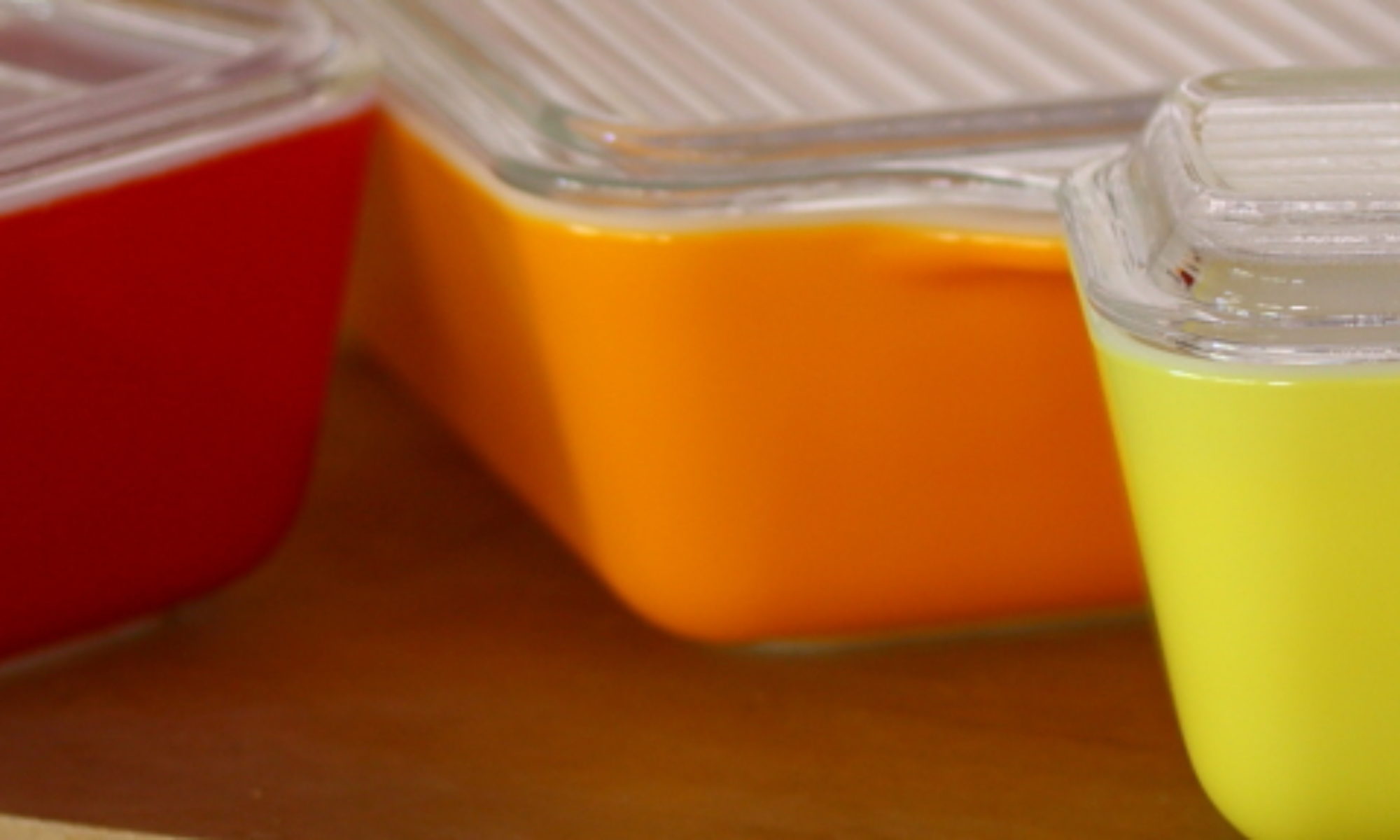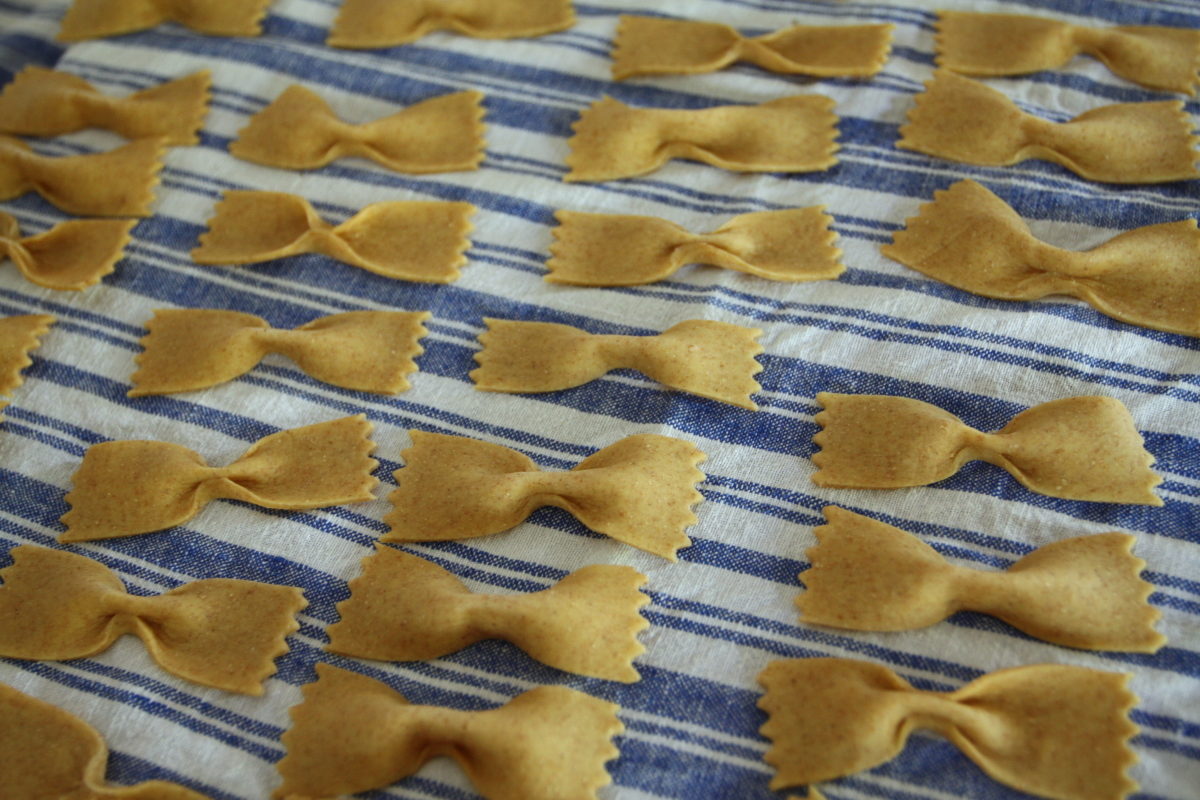
We had such success with the shaping of pasta dough into strozzapreti that we thought we’d try our hand at another pasta shape: butterflies, or more commonly known, farfalle. You know the shape, the pasta that looks like small bow-ties. Sure, we know that you can just pick up a box of farfalle at the store for around a buck, but we figured that if we could master — or at least make a reasonable facsimile — farfalle, we’d be able to make them in whole-wheat versions, egg-less versions, typical egg pasta, or even porcini pasta. Plus, we like the shape of farfalle, which is reason enough to try our hand at making them.
We’ll assume that you’ve already made a batch of pasta dough, and that all you want to do is make up a whole bunch of farfalle. You’ll see in the photos that we made whole-wheat pasta, which we served with a batch of alfredo sauce with peas, a slight modification on fettuccine alfredo. You, of course, might want to scratch up something completely different.
Roll out dough. As with all shapes based on flat pasta, we roll the dough into a thin pasta sheet. If you have a pasta machine, this is very easy, but even with a rolling pin — which we used for years — it’s still not too difficult. To keep the size of the sheet manageable, we work with about a quarter of the dough at a time. When rolling the dough, try to get it about 1/16 of an inch thick or thinner.
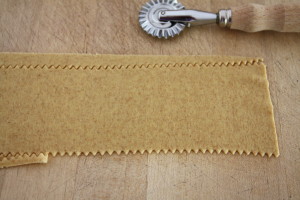
Trim. Once you have a sheet of dough rolled out, trim off the ragged ends with a shape knife. Then, if you have one, use a fluted wheel to trim the top and bottom into a nice wavy shape. If you don’t have a fluted cutter, your farfalle will have straight edges, which is nice, too. All the trimmings can be mixed into the next piece of dough to be rolled and shaped.
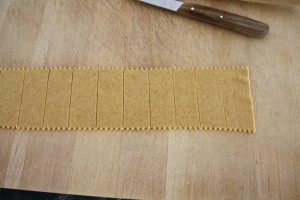
Slice. Slice the pasta sheet cross-wise into strips about 1-inch wide by 3 inches long, with the fluted cuts on the short sides. Now, you can see what’s going to happen next, right?
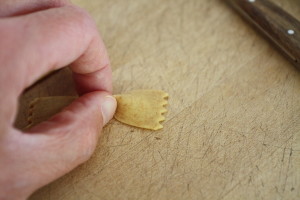
Pinch. Work with a single strip at a time, and pinch the middle together — it doesn’t have to be hard pinch, just enough to form a butterfly (or bow-tie, if you prefer), and transfer it to a rack covered with a clean dish towel.
Repeat. Now, repeat the roll, trim, slice, and pinch a bunch of times, and within 10 minutes, you’ll have a rack full of home-scratched beautiful butterflies. Cool.
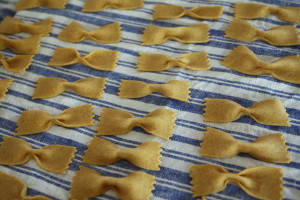
Dry. You can use the pasta immediately, or let it dry for a while. We like to let it dry for at least 30 minutes before using, mainly because we often need to do other prep work for our meal before starting to cook the pasta.
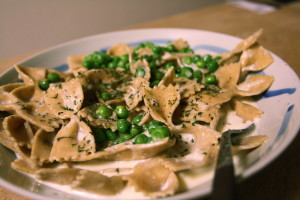
Boil. Always remember that fresh pasta boils up a lot faster than store-bought pasta, so, when you boil these butterflies in salted water, remember to test for doneness early and often.
That’s it. We thought that these would be more fiddly than they were. We expected that our fingers would be too thick to pinch the pieces and have them still look nice, and so we thought of back-up plans like using small tweezers, or using something like chopsticks to form the pinch, but none of that was needed. Instead, just a quick little pinch in the middle, and done. You might think it’s a lot of trouble, but, really, making farfalle goes quickly, and you can do a half pound of pasta in, say, 15 to 20 minutes, which is not bad at all.
